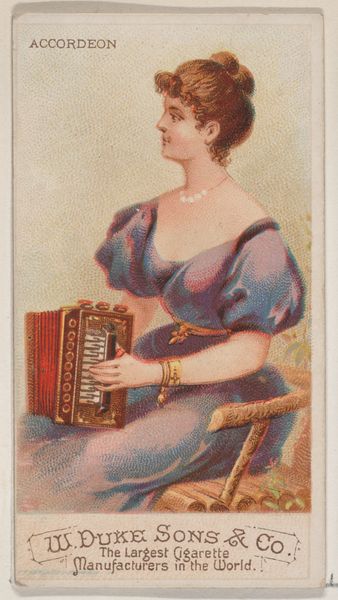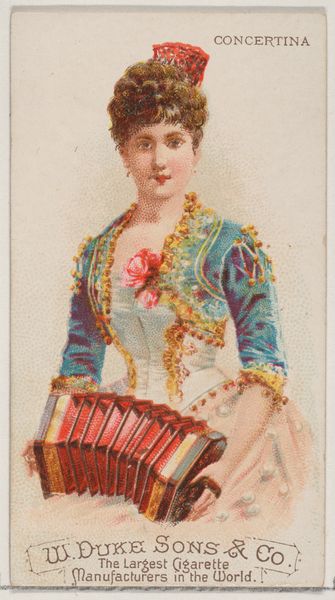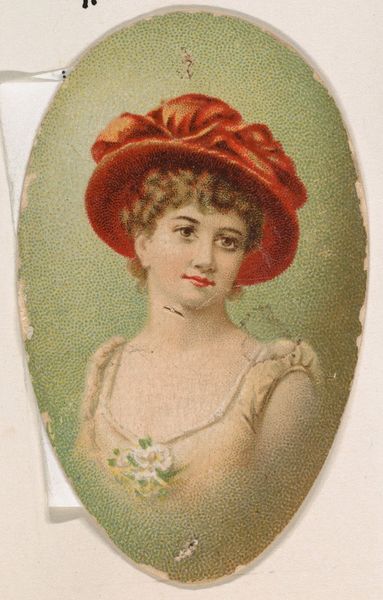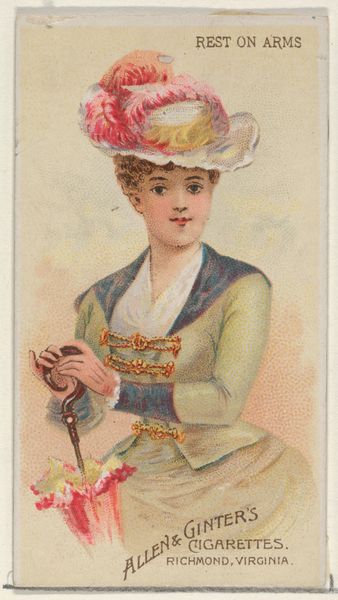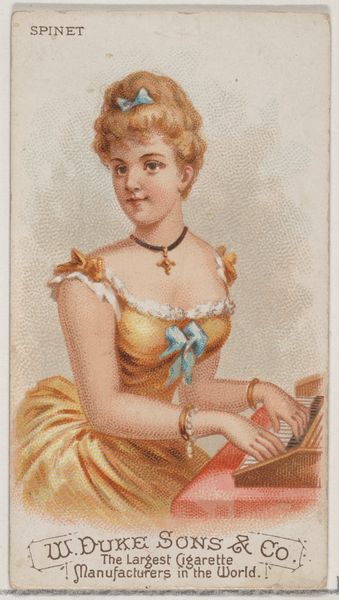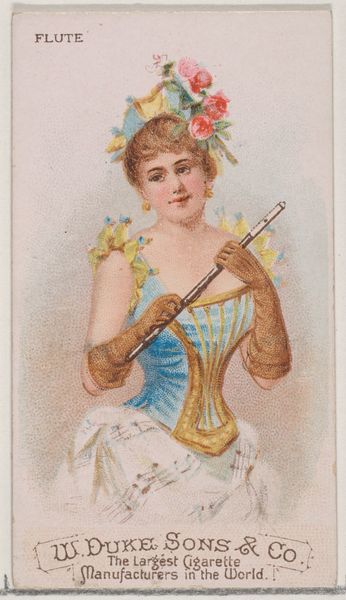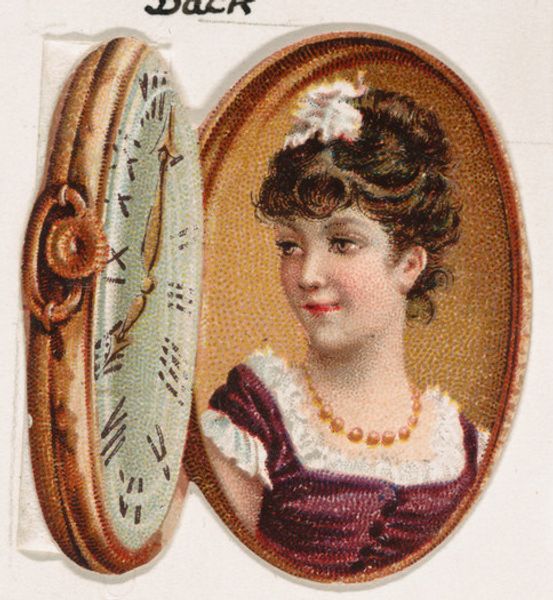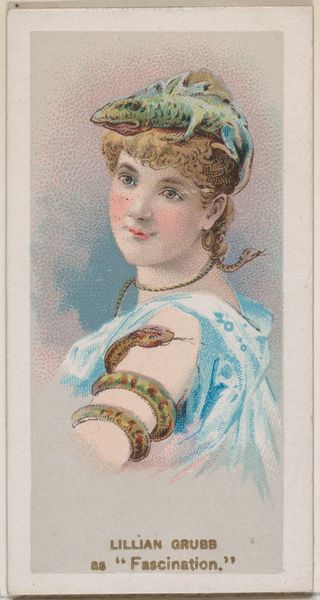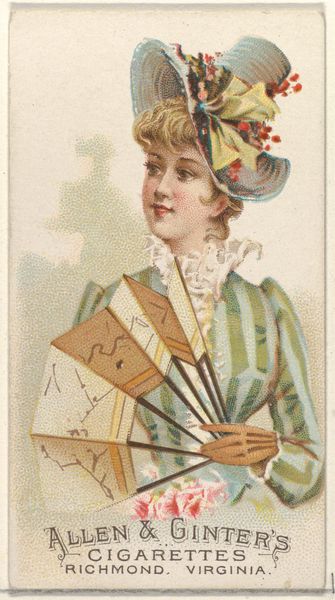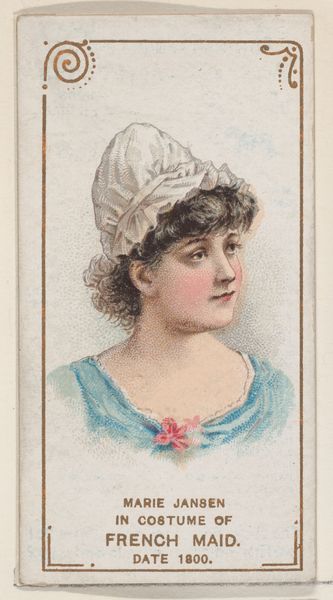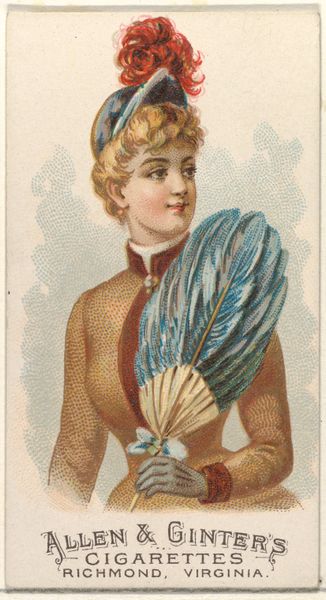
Zither, from the Musical Instruments series (N82) for Duke brand cigarettes 1888
0:00
0:00
drawing, print
#
portrait
#
drawing
# print
#
impressionism
#
oil painting
#
watercolour illustration
#
genre-painting
#
musical-instrument
#
portrait art
Dimensions: Sheet: 2 3/4 x 1 1/2 in. (7 x 3.8 cm)
Copyright: Public Domain
Curator: The artwork before us, "Zither, from the Musical Instruments series (N82) for Duke brand cigarettes", dates back to 1888. It's currently housed here at the Metropolitan Museum of Art. These were actually trade cards produced by W. Duke, Sons & Co. Editor: Oh, isn't she sweet! There's something about that soft, rosy palette that just exudes innocence and...well, pleasant leisure. A quiet afternoon melody, perhaps? It has a strange mix of refined illustration and mass-produced ephemera. Curator: Indeed. The zither itself represents more than just an instrument; it's a symbol of leisure and cultivated artistry, particularly associated with alpine regions in Europe. And you notice how it intersects with commerce here? It’s promoting… cigarettes. Editor: Ah yes, the fine art of nicotine. It is sort of an odd juxtaposition isn't it? Though, I can see the link - cigarettes, in this era, signified relaxation and enjoyment just like music. What intrigues me is how consciously they utilized this imagery to cultivate a "cultured" persona around their product. Curator: Precisely! The woman’s traditional dress, that decorative hat, evokes specific cultural notions about German or Austrian identity, drawing from cultural tropes that were current in that era. The manufacturers would have considered carefully the associations these cultural markers conjured. Editor: Do you think that people saw the same stereotypes, or maybe aspirational symbols, that we see when viewing it now? Because what comes to my mind now is pretty distant from whatever feelings might've emerged from a contemporary audience viewing that same scene in a magazine, like a faraway mountain mirage... a world where things were sweeter and easier and safer... Curator: Well, cultural symbolism shifts over time, certainly. Back then, perhaps the card evoked a connection to heritage or exoticism; for us today, it triggers discussions about advertising strategies, consumer culture and also of cultural appropriation. Editor: And the fascinating part of art is the bridge that it forms over that very long stretch of time to inspire feelings and reactions from anyone who looks at it in any given day. Well, for such a simple piece of commercial art, it has plenty to say! Curator: Precisely; each image is layered with different associations dependent on context and viewer; it reminds us of the power of images to convey complex ideas.
Comments
No comments
Be the first to comment and join the conversation on the ultimate creative platform.
